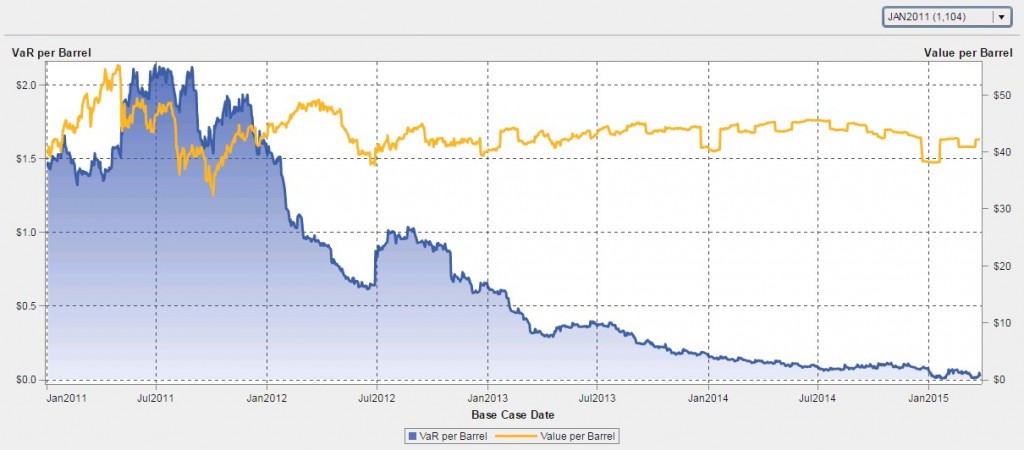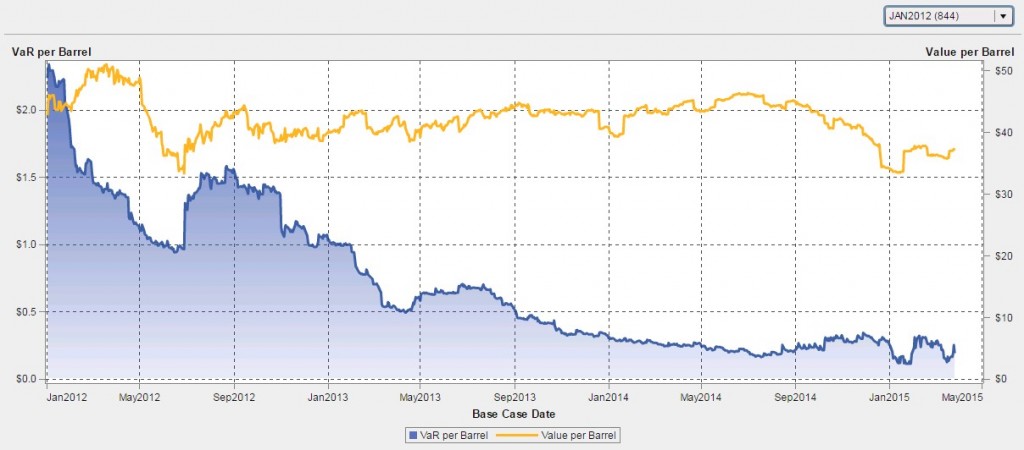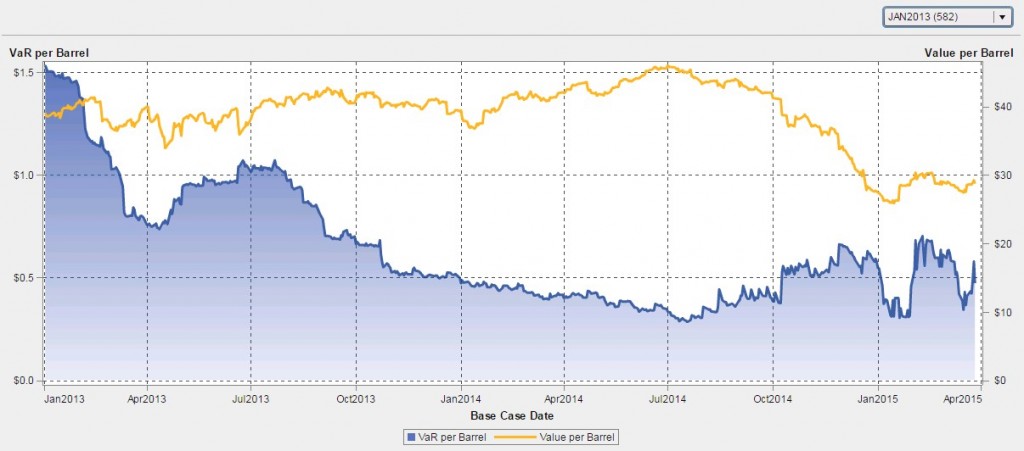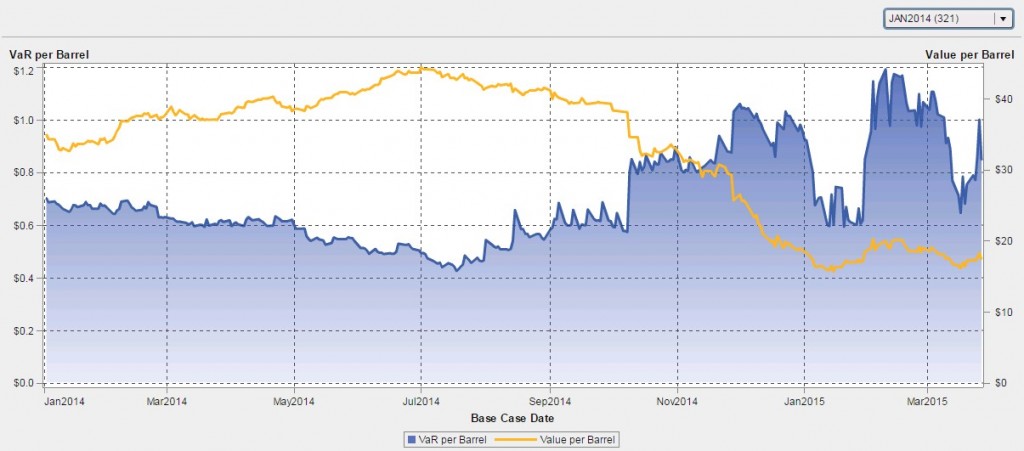Oil is bouncing around the $50 range as the market adds and loses value with each new headline, from potential new Iranian exports after the nuclear talks to the slowest month of inventory builds at Cushing since Thanksgiving. The US rigcount is down nearly 23 percent year-over-year, but the rate of decline is slowing. Meanwhile, storage swells well ahead of the usual driving season highs, adding about 10 million barrels a week in March. Inventories are at their highest since 2001 and producers continue to pump. Glut is the word of the day.
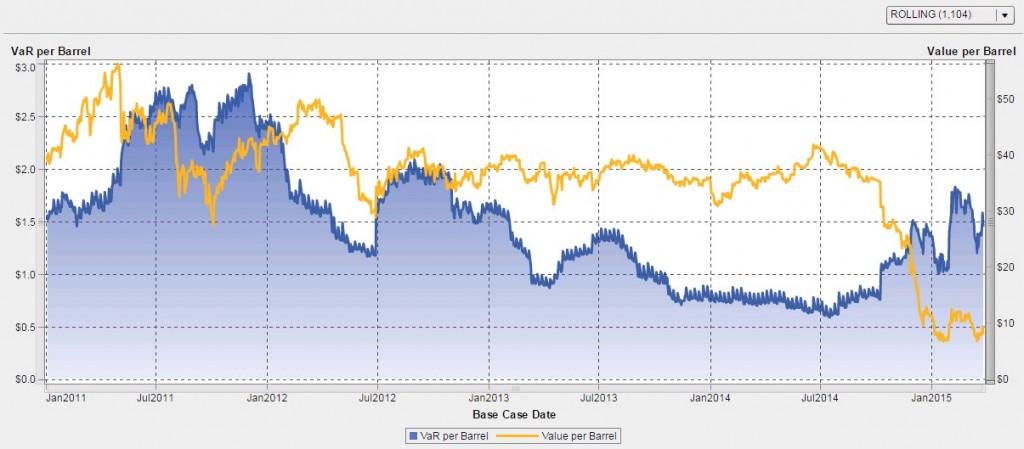
The chart above represents both Mark-to-Market (MtM) and Value-at-Risk (VaR), at the barrel level, of the rolling five-year portfolio. As the chart shows, VirtualOil’s value per barrel saw a massive squeezing of the margins going into the year, but it has stabilized as the price of oil found some solid footing around the strike price of $50 per barrel. WTI spent most of March below our shut-in price, with only five days at or above $50, but April has been struggling to move upward.
However, the crude price curve is still in contango, so our forward production is valued with a healthier wedge in our margins. If the market flipped from contango into backwardation, where near-term price contracts are higher than futures contract that are further out in time, VirtualOil would see a reduction in the value of its future production and subsequently the value of the company. VirtualOil’s Value-at-Risk remains higher than what we saw for most of 2014 as the period of high price volatility is still being factored into the calculation. As that time window moves to a relatively more stable period of volatility, we expect to see VaR ticking down.
That outlook is supported by VaR backtesting data. Over the last couple months, we have actually seen less volatility than expected, with our day-over-day change in MtM tripping through the VaR limit only once since early February. That’s in stark contrast to the extremes of the past six months. VirtualOil’s VaR calculation uses a 90-day price history window, so it is still incorporating some of that high volatility. The VaR range will tighten as we move out of the volatile period, resembling more the July-Oct 2014 period shown in Chart 2.
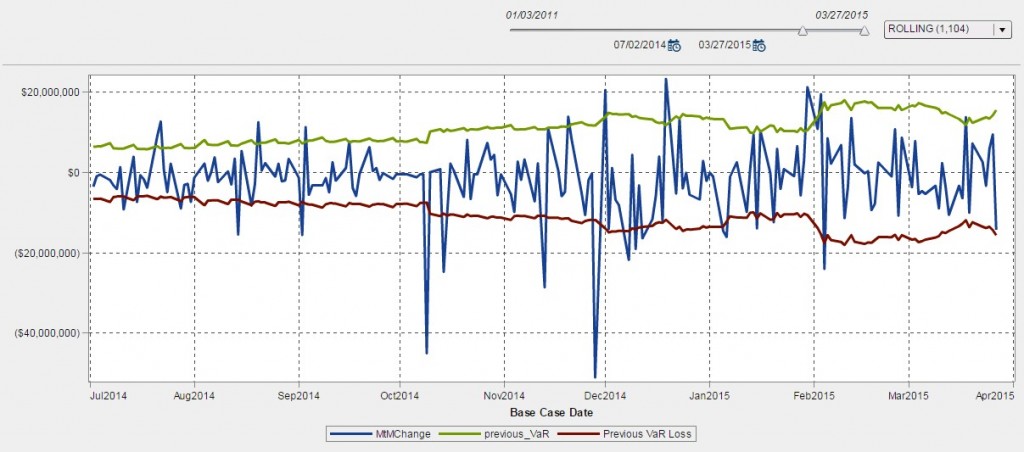
But with the continued tumult in the market, another very volatile period could easily occur again. The optimistic scenario would see an eventual reduction of OPEC production and an easing of inventory numbers before they hit storage capacity. The negative view says the Saudis and domestic producers continues to pump and inventory hits its max. Alternative scenarios fall somewhere in the middle. It’s a good reminder not to get too comfortable with your VaR without including some robust scenario analysis.
See below for additional visualizations of varying vintages. Join us back here each month to see how VirtualOil is performing and how the risk analysis is evolving.
Assumptions
The hypothetical derivatives-based oil production firm VirtualOil simulates the performance of a generic crude oil asset, and delivers sectorial exposure to the commodity oil market. Specifically, the VirtualOil structure starts up with an investment of $350MM in monthly average price call options with a strike price of $50 per barrel on the price of WTI light sweet crude oil. The strip of options starts at 10,000 barrels per day and extends out for 5 years with a 20% average annual decline in underlying notional barrels, replicating a physical oil asset. VirtualOil initially holds notional crude oil reserves of approx. 10MM barrels. Monthly cash flow is generated when the daily average WTI price relative to the preceding month exceeds $50 per barrel. Cash flow is reinvested monthly at 5% and the project winds up when the reserves are depleted.
VirtualOil is managed in SAS® BookRunner with reports surfaced in SAS® Visual Analytics. Learn more aboutSAS BookRunner’s state-of-the-art energy trading & risk management capabilities.
Disclaimer: This is a fictitious portfolio and is not a solicitation to trade.
